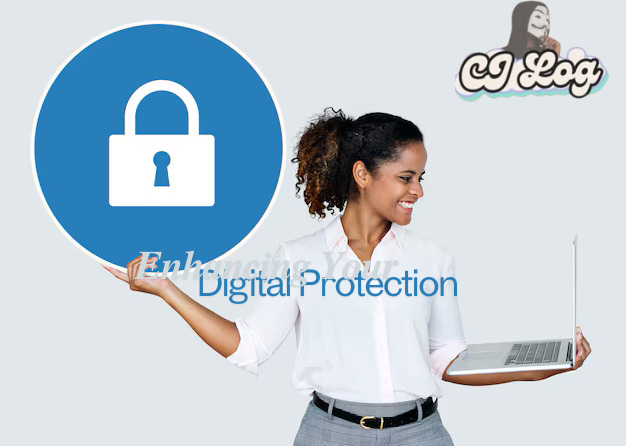Phishing attacks are one of the most common and dangerous types of online fraud. They can target anyone, from individuals to large corporations, and are often the gateway for identity theft, financial loss, or malware infections. In this article, we’ll cover the essentials of phishing awareness, how to spot phishing attempts, and the best practices for staying safe online.
What is Phishing?
Phishing is a type of cyberattack where an attacker impersonates a legitimate organization or individual in an attempt to deceive you into divulging personal information. This could be anything from passwords, credit card numbers, social security numbers, or even access to your bank accounts.
The attacker typically uses email, SMS, social media, or even phone calls to carry out the attack. The message may look like it’s from a trustworthy source, such as your bank, a popular online retailer, or a colleague, but it’s actually a fake designed to trick you.
Common Types of Phishing Attacks
Email Phishing: This is the most common type of phishing. You’ll receive an email that seems to come from a legitimate source (like your bank or an online retailer), asking you to click a link or open an attachment. These emails often contain urgent messages or threats, such as “Your account has been compromised, please verify your information now.”
Spear Phishing: Unlike generic phishing attacks, spear phishing targets a specific individual or organization. The attacker often does extensive research to make the email look even more legitimate. This can include using the victim’s name, job title, or other personal information to make the message more convincing.
Smishing: Smishing is phishing conducted via SMS or text messages. The message typically contains a link to a fraudulent website or asks you to call a fake customer service number.
Vishing: Similar to smishing, vishing involves voice calls. The attacker may impersonate a legitimate organization (like your bank) and ask for sensitive information over the phone.
Whaling: This type of phishing targets high-profile individuals like CEOs or other executives. These attacks are more sophisticated and usually involve highly tailored emails designed to trick the victim into taking a specific action, like transferring money or revealing confidential information.
How to Spot Phishing Attempts
Phishing attempts can be difficult to identify because attackers often go to great lengths to make their messages look legitimate. However, there are several signs you can look out for that may indicate a phishing attempt.
1. Suspicious Sender Email or Phone Number
Phishers often use email addresses that look similar to legitimate addresses, but they may contain extra characters or misspellings. For example, you might receive an email from “@amazon.com” but it could be something like “@amaz0n.com.” Always double-check the sender’s information.
2. Urgent or Threatening Language
Phishing emails often try to create a sense of urgency. You may be told that your account will be locked, your payment will fail, or you need to take immediate action. This is a classic tactic to rush you into making a decision without thinking critically.
3. Suspicious Links or Attachments
Hover over any links in an email (but don’t click them) to check where they lead. Phishers often use deceptive links, like a link that says “Click here to reset your password,” but when you hover over it, you see a completely different web address. Similarly, be cautious of unsolicited attachments, as they may contain malware.
4. Spelling and Grammar Mistakes
Phishing emails often contain poor grammar, spelling errors, or awkward phrasing. While legitimate companies may make occasional errors, phishing emails are more likely to contain multiple mistakes.
5. Requests for Personal Information
Legitimate companies will never ask for sensitive personal information like your social security number, passwords, or bank account details via email or text message. Be suspicious if an email asks for such information.
Steps to Protect Yourself from Phishing
1. Don’t Click on Suspicious Links
If you receive an unsolicited email, SMS, or message asking you to click a link, don’t do it. Instead, go directly to the company’s website by typing the URL into your browser or using a verified phone number to contact customer support.
2. Enable Two-Factor Authentication (2FA)
Many online services offer two-factor authentication (2FA), which adds an extra layer of security to your accounts. Even if a hacker gets your password, they won’t be able to log in without the second authentication method (usually a code sent to your phone or email).
3. Use Antivirus Software
Ensure you have up-to-date antivirus software installed on your devices. Antivirus programs can help identify and block malicious websites and files that could be part of a phishing scam.
4. Be Cautious with Email Attachments
If you weren’t expecting an email with an attachment, be cautious. Even if the email appears to come from someone you know, confirm with them directly (via phone or text) before opening any attachments.
5. Double-Check Web Addresses
When entering personal information on a website, always double-check that the URL begins with “https://” and that there’s a padlock icon next to the address bar. This indicates that the site is encrypted and more secure.
6. Report Phishing Attempts
If you receive a phishing email or SMS, report it to the relevant organization (such as your bank or an email provider). Many companies have dedicated email addresses or phone numbers to report phishing attempts. This helps them improve their security and protect other users.
7. Educate Yourself and Others
Stay informed about the latest phishing trends and scams. Share this knowledge with friends, family, and coworkers, as they may also fall victim to these attacks. The more people are aware of phishing tactics, the less likely they are to be fooled.
What to Do if You Fall Victim to Phishing
If you believe you’ve been scammed, it’s essential to act quickly.
- Change Your Passwords: Immediately change the passwords for any accounts that might have been compromised. Use a strong, unique password for each account.
- Notify the Relevant Authorities: If your financial information has been compromised, contact your bank or credit card provider immediately to report fraudulent activity. You should also file a report with the appropriate authorities (e.g., the Federal Trade Commission in the U.S.).
- Monitor Your Accounts: Keep an eye on your bank statements, credit report, and any other relevant accounts for unusual activity. If necessary, place a fraud alert or freeze your credit.
- Run a Malware Scan: If you clicked on a suspicious link or downloaded an attachment, run a complete scan of your device to ensure it’s free of any malware or viruses.
Conclusion
Phishing is a constant threat in today’s digital world, but with the right knowledge and precautions, you can protect yourself from falling victim to these scams. Always remain cautious of unsolicited emails, messages, or phone calls, and take the time to verify the authenticity of any requests for sensitive information. By staying vigilant and following best practices for online security, you can help safeguard your personal data and avoid costly consequences.


